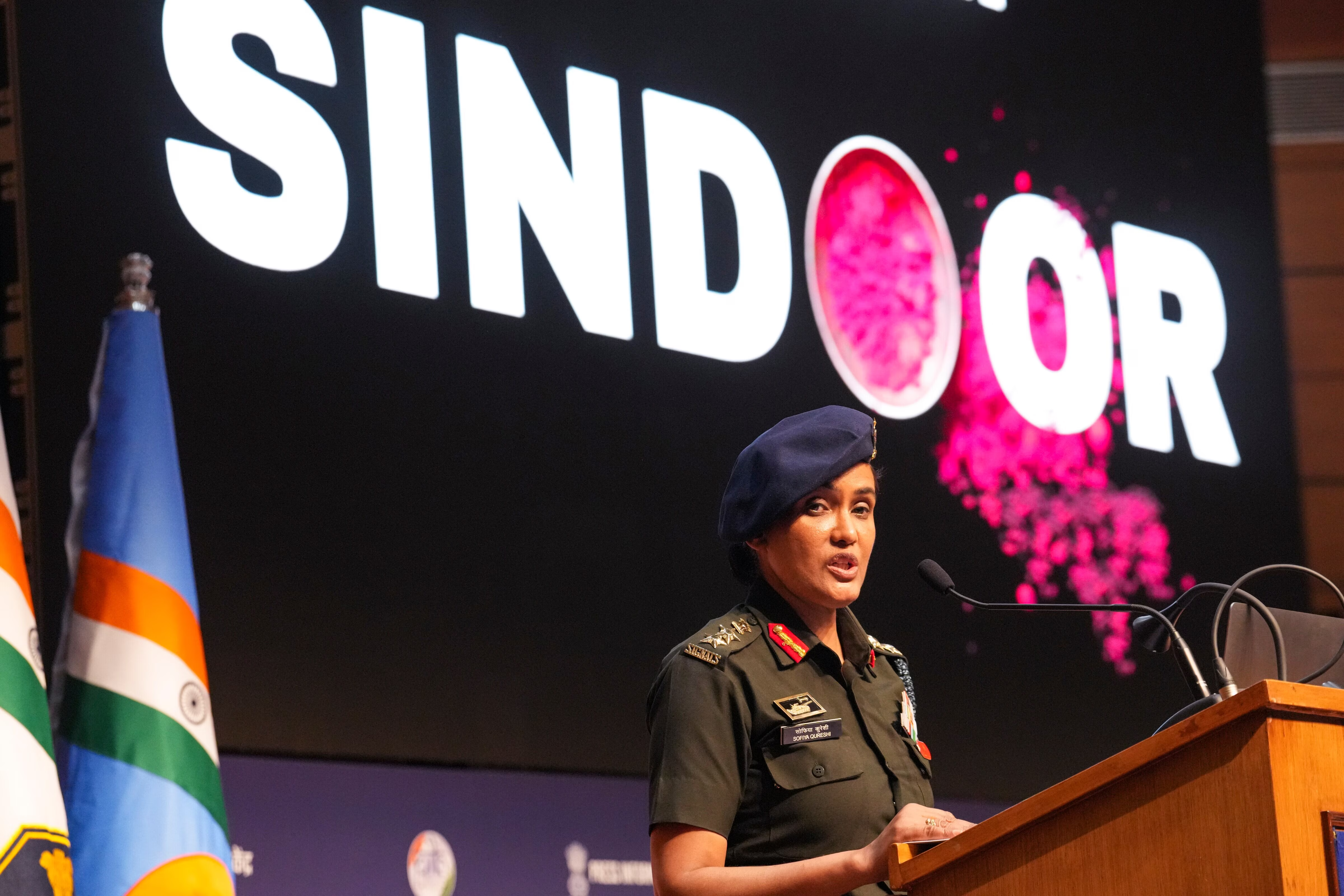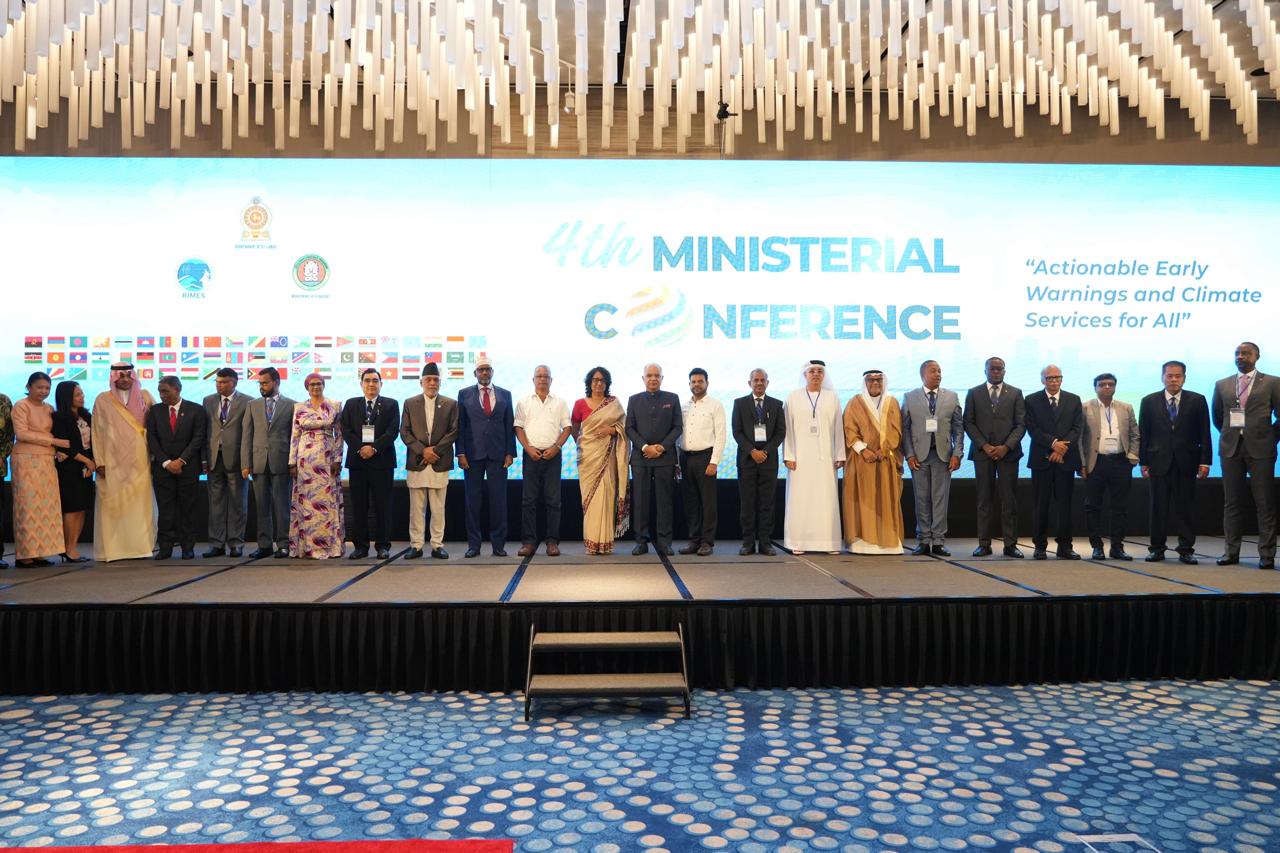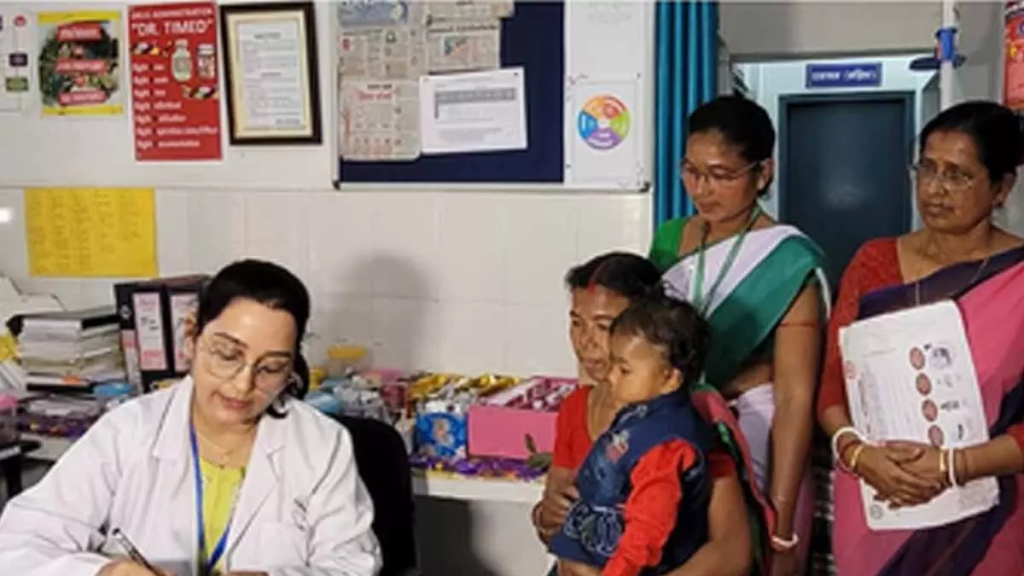- Courses
- GS Full Course 1 Year
- GS Full Course 2 Year
- GS Full Course 3 Year
- GS Full Course Till Selection
- Online Program
- GS Recorded Course
- NCERT (Recorded 500+ Hours)
- Polity Recorded Course
- Geography Recorded Course
- Economy Recorded Course
- AMAC Recorded Course
- Modern India, Post Independence & World History
- Environment Recoded Course
- Governance Recoded Course
- Science & Tech. Recoded Course
- International Relations and Internal Security Recorded Course
- Disaster Management Module Course
- Ethics Recoded Course
- Essay Recoded Course
- Current Affairs Recoded Course
- CSAT
- 5 LAYERED ARJUNA Mentorship
- Public Administration Optional
- ABOUT US
- OUR TOPPERS
- TEST SERIES
- FREE STUDY MATERIAL
- VIDEOS
- CONTACT US
Glacial Lake Outburst Floods
Glacial Lake Outburst Floods
05-10-2023
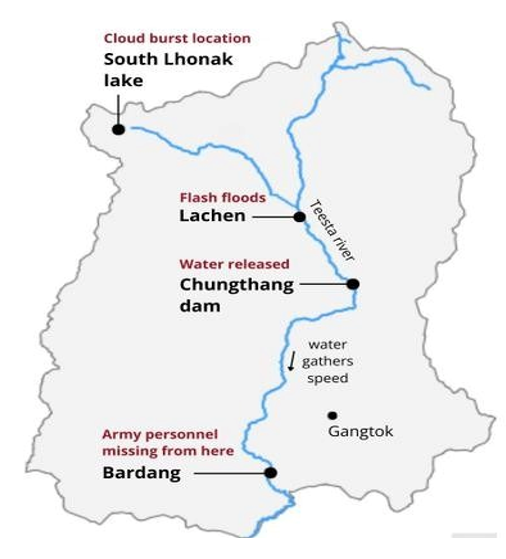
Latest Context:
Recently, a GLOF occurred in the South Lhonak Glacial Lake in Sikkim, which led to the rise of water levels in Teesta river.
What are Glacial Lakes?
- These are the lakes that form as a result of the melting of glaciers. They are often found in areas where glaciers once existed or are currently present.
- These lakes are created when the meltwater from the glacier accumulates in depressions or basins on the landscape.
- These lakes can vary in size and are often known for their unique colours due to the fine rock particles carried by the glacial meltwater.
What is Glacial Lake Outburst Floods (GLOF)?
- A GLOF is a sudden event that occurs, when a glacial lake's dam or ice barrier fails, leading to the rapid release of a large volume of water.
- These floods typically occur in mountainous regions where glaciers are present, and they pose significant risks to downstream communities and infrastructure.
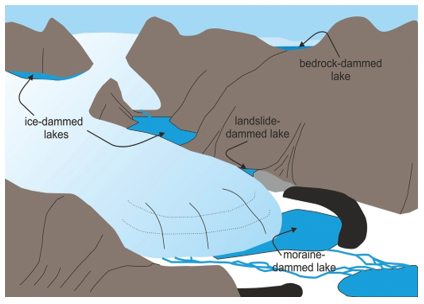
Here's how a GLOF typically occurs:
- Formation of glacial lake: Glacial lakes form as glaciers advance and retreat due to changes in temperature and precipitation. Meltwater from the glacier accumulates in depressions created by the glacier's movement, resulting in the formation of these lakes.
- Dam formation: The glacial lake is often held in place by a natural dam composed of moraine, ice, or other glacial deposits. Basically, Moraine is a mass of rocks and sediment carried down and deposited by a glacier, typically as ridges at its edges. These dams are not always stable and can weaken over time due to various factors, including the melting of ice, increased water pressure, or the infiltration of meltwater.
- Triggering event: GLOFs can be triggered by various events, such as heavy rainfall, earthquakes, landslides, or the melting of the dam due to rising temperatures. These triggers can weaken the dam or cause it to rupture.
- Flood release: When the dam fails, it can release a massive amount of water downstream at a very high velocity. The floodwaters can pick up debris, rocks, and sediment along the way, creating a highly destructive force.
- Downstream impact: The GLOF can cause extensive damage to infrastructure, including bridges, roads, buildings, and agricultural land. It also poses a significant threat to human lives and can lead to loss of life and property.
National Disaster Management Authority’s (NDMA) guidelines to mitigate and respond to GLOF:
-
Risk Assessment:
- Identify and assess glacial lakes that pose a GLOF risk.
- Monitor glacier and lake dynamics to detect changes that might indicate an increased risk.
-
Early Warning Systems:
- Develop and implement early warning systems to provide timely alerts to communities downstream of potentially hazardous glacial lakes.
- Establish communication channels to provide warnings effectively.
-
Capacity Building and Training:
- Train local communities, emergency responders, and relevant authorities in GLOF preparedness and response.
- Conduct drills and exercises to ensure a coordinated response.
-
Infrastructure Protection:
- Design and implement engineering solutions to reduce GLOF risk, such as controlled drainage systems for glacial lakes.
- Construct protective infrastructure like embankments and diversion channels.
-
Land Use Planning:
- Develop land use plans that take into account GLOF risk, ensuring that vulnerable areas are not densely populated or used for critical infrastructure.
-
Evacuation and Shelter Plans:
- Establish evacuation plans for communities at risk, including identifying safe evacuation routes and designated shelters.
- Develop plans for the care and management of displaced populations.
-
Public Awareness and Education:
- Conduct awareness campaigns to educate communities about GLOF risks and safety measures.
- Promote community involvement in disaster preparedness and response.
-
Cross-Agency Coordination:
- To promote collaboration among government agencies, local authorities, NGOs, and international organizations to enhance GLOF response capabilities.
-
International Cooperation:
- Collaborate with neighbouring countries, particularly if transboundary glacial lakes are involved, to share information and coordinate response efforts.
Conclusion:
GLOFs are particularly concerning due to their rapid onset and the difficulty in predicting when and where they will occur. Climate change, with its associated increase in glacial melt and potential for more frequent extreme weather events, has increased the risk of GLOFs in some regions.

